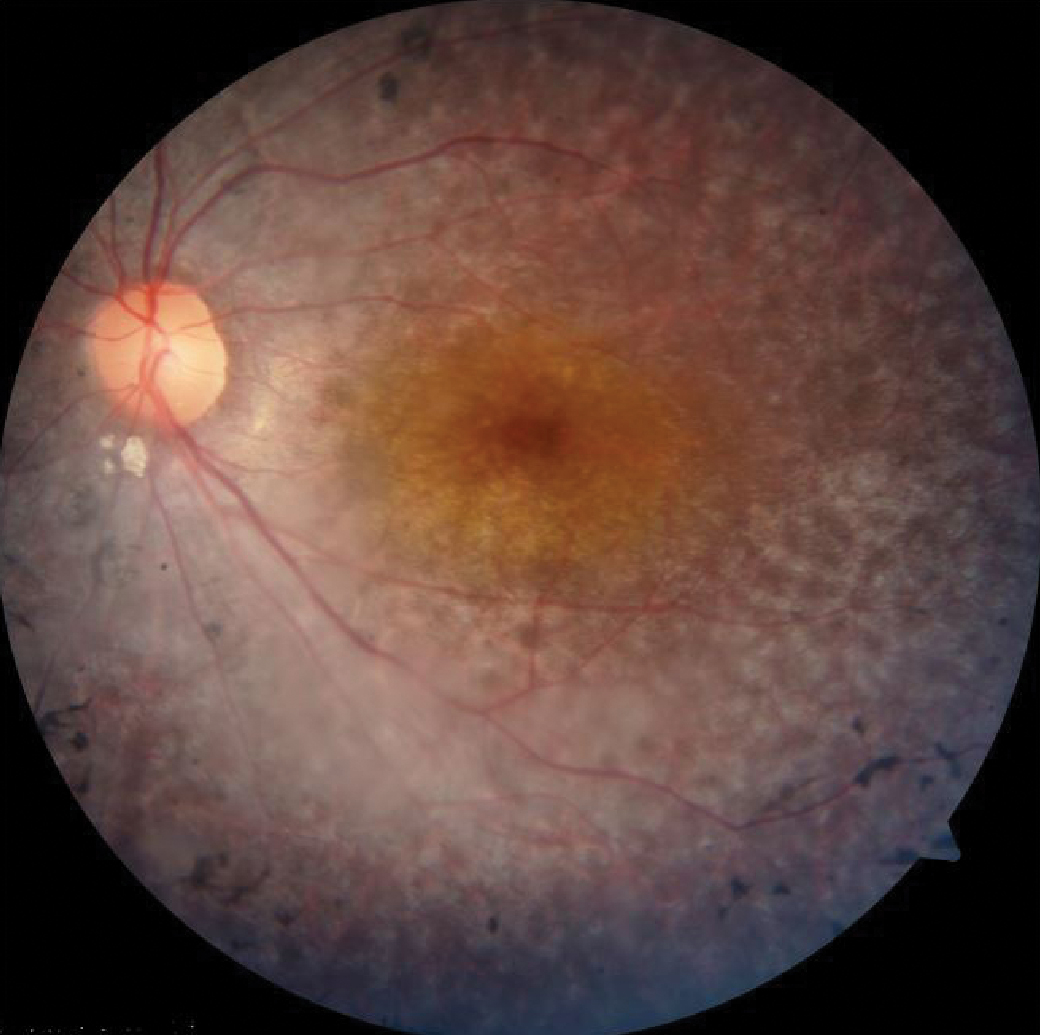 |
The hazard ratio of open-angle glaucoma is significantly greater in those with RP, so clinicians should pay more attention to the optic nerve. Photo: Himakshi Bhatt, OD. Click image to enlarge. |
Similarities in genetic variants and pathophysiology have been reported between retinitis pigmentosa and open-angle glaucoma. A recent nationwide, population-based, cohort study sought to explore the connection further and found that patients with retinitis pigmentosa are at a greater risk of developing open-angle glaucoma than those without the condition.
The study included patients with retinitis pigmentosa (n=6,223) as well as a comparison group of 1:4 age- and gender-matched individuals without the condition (n=24,892).
Data showed that the percentages of diabetes mellitus, hypertension and hyperlipidemia were significantly higher among the retinitis pigmentosa group. The researchers reported that the cumulative incidence of open-angle glaucoma in patients with retinitis pigmentosa was 1.57%. This was significantly higher versus the comparison group.
Univariate Cox regression analysis found that the hazard of open-angle glaucoma development was also significantly greater among patients with retinitis pigmentosa vs. those without, according to the study authors, who noted that the increased risk remained after adjusting for age, gender, diabetes mellitus, hypertension and chronic kidney disease.
“People with retinitis pigmentosa have an increased risk of developing open-angle glaucoma,” the study authors concluded. “Therefore, clinicians should be aware of the possible risk of developing open-angle glaucoma in these patients and pay more attention to the changes in the optic nerve during the regular follow-up.”
Hung MC, Chen YY. Patients with retinitis pigmentosa may have a higher risk of developing open-angle glaucoma. J Ophthalmol. June 22, 2022 [Epub ahead of print]. |

